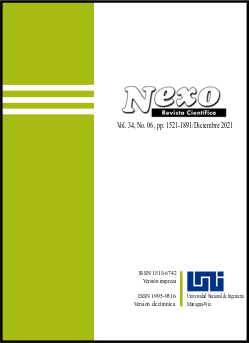Opportunities for development of elevated electric transport in a large city
DOI:
https://doi.org/10.5377/nexo.v34i06.13131Keywords:
Elevated Electric Transport, Large City, Monorail Transport, Transport SystemAbstract
Modern large cities include both historically developed central parts and rapidly developing peripheral neighborhoods. Today, transport flows are formed not only by traditional bus, trolleybus, and tram routes, but also by significant fleets of taxis and private vehicles. An increase in traffic load and a shortage of parking spaces significantly reduces the capacity of roads and negatively affects the environmental situation. Ensuring transport accessibility based on the development of underground urban transport, the metro, is accompanied by great labor intensity, time and financial costs. Residents of large cities try to use bicycles, electric scooters, monowheels for intra-city movements. However, in winter in Russia this type of ecological personal transport becomes less accessible. A promising option for the development of public transport for large cities with a significant length of the street network in the absence of the technical possibility of expanding the roadway, can be an elevated electric transport (monorail). Using the example of the city of Samara, where the level of automobilization in 2019 reached 344 cars per 1000 people, the possibilities of developing the transport system of a large city with the inclusion of a monorail transport section in such a system are considered. This innovative solution will improve transport accessibility and reduce the negative impact on the urban environment. The average payback period of the project will be 4.4 years.
Downloads
1697
Downloads
Published
How to Cite
Issue
Section
License
Copyright (c) 2021 Universidad Nacional de Ingeniería

This work is licensed under a Creative Commons Attribution 4.0 International License.
The authors who publish in Nexo Scientific Journal agree to the following terms:
- Authors retain the copyright and grant the journal the right of the first publication under the license Creative Commons Attribution License, which allows others to share the work with a recognition of the authorship of the work and the initial publication in Nexo Scientific Journal.
- Authors may separately establish additional agreements for the non-exclusive distribution of the version of the work published in the journal (for example, in an institutional repository or a book), with the recognition of the initial publication in Nexo Scientific Journal.
- Authors are allowed and encouraged to disseminate their works electronically (for example, in institutional repositories or in their own website) before and during the submission process, as it can lead to productive exchanges, as well as earlier and greater citation of published works.










